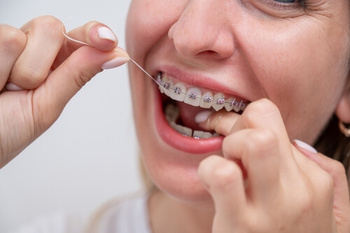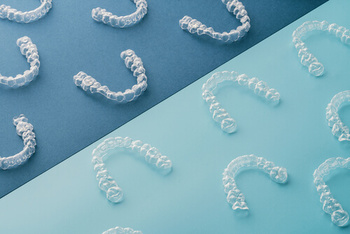Starting orthodontic treatment is an exciting step toward achieving a straighter, healthier smile. Whether you have traditional metal braces, lingual braces, or clear aligners, learning how to care for dental braces is essential for both comfort and results. Braces create small spaces where food particles and plaque can easily become trapped, so special attention is needed to protect your tooth enamel, gums, and overall oral health.
This guide walks you through practical tips, healthy habits, and braces care techniques to make the treatment process smoother and ensure a successful outcome. To make sure you’re on the right track with your orthodontic care, consider consulting a braces specialist at Castle Hill, where expert guidance can help you maintain optimal oral health throughout your treatment.
Why Braces Care Matters
Wearing braces is not just about straightening teeth. The process also affects your oral hygiene and requires consistent effort to keep your teeth, gums, and braces clean. Poor oral care can lead to cavities, gum disease, bad breath, and even delays in your orthodontic treatment. With the right daily routine and habits, you can protect your teeth and achieve the results your orthodontist designed for you.
Brushing with Braces: Doing It Right
Choose the right toothbrush
Using a soft bristled toothbrush is key to protecting tooth enamel and gums. Many people also find an interdental brush or interproximal brush helpful to reach around brackets and wires where a regular brush may not clean effectively.
Brush often and thoroughly
Brushing should be done after every meal to prevent food debris from sticking to brackets and wires. When you brush your teeth, angle the brush both above and below the braces to clean every surface of the tooth. Using fluoride toothpaste is recommended to strengthen tooth enamel and prevent cavities.
Take your time
Instead of rushing, spend at least two to three minutes brushing. Focus on removing trapped food particles that can cause plaque buildup and tooth discoloration.
Flossing with Braces: Easier Than You Think
Flossing is one of the biggest challenges of braces care, but it is also one of the most important.

Floss threaders and alternatives
A floss threader helps guide dental floss under wires so you can clean between your teeth. Many people also use interdental brushes or water flossers as easier alternatives that make flossing less frustrating.
Daily routine
Even though it may take longer at first, flossing once a day helps keep gums clean, prevents cavities, and protects your oral health during orthodontic treatment.
Eating Smart with Braces
Foods to avoid
Some foods can damage braces or cause discomfort. Sticky foods like caramel and chewing gum can pull on brackets, while hard foods like nuts, ice, and raw carrots can break wires or brackets.
Braces-friendly foods
Soft fruits, cooked vegetables, scrambled eggs, yogurt, and pasta are gentle on braces and teeth. Choosing braces-friendly foods helps you avoid damage and keeps eating enjoyable.
Be careful with staining
Red wine, dark sauces, and certain drinks can stain both tooth enamel and the braces themselves. Rinsing with warm water after eating these foods reduces staining and protects your smile.
Managing Discomfort During Treatment
It’s normal to feel some discomfort after getting braces or during adjustments. Tooth movement naturally causes sensitivity, but you can manage it effectively.
- Use orthodontic wax to cover brackets or wires that irritate your cheeks.
- Over the counter pain relief or topical anesthetic like Ora Gel can ease sore gums.
- Rinsing with warm water and salt can soothe irritation and promote healing.
Discomfort usually lessens after a few days, but these small steps make the adjustment period easier.
Preventing and Handling Orthodontic Emergencies

Sometimes brackets or wires may loosen, break, or cause pain. Knowing how to handle orthodontic emergencies is important.
- If a wire is poking your mouth, use orthodontic wax or an eraser tip to gently push it into a more comfortable position until you see your orthodontist.
- If a bracket comes loose, schedule an emergency appointment to fix it.
- Avoid trying to fix braces yourself to prevent further damage.
Taking quick action ensures that your treatment stays on track and avoids unnecessary delays.
The Role of Regular Check-Ups
Scheduled appointments with your orthodontist are essential for monitoring tooth movement and making adjustments with rubber bands, wires, and brackets. Skipping appointments can slow progress and affect the successful outcome of your treatment.
Visiting your dentist regularly is just as important. A dental hygienist can provide professional cleanings to remove plaque and tartar that regular brushing and flossing may miss.
Sports and Braces: Playing It Safe
If you play sports, protecting your braces is a must. Always wear a custom mouthguard to prevent injury and damage to your braces. A mouthguard not only shields brackets and wires but also protects your teeth and gums from trauma.
Special Tips for Different Types of Braces
Metal and traditional braces
These are the most common and require careful brushing and flossing to prevent trapped food and plaque.
Lingual braces
Since these are placed behind the teeth, cleaning can feel more difficult. Interproximal brushes and water flossers are especially helpful for reaching hidden areas.
Clear aligners
Although not traditional braces, clear aligners also require care. Always brush your teeth before wearing them, clean the aligners regularly, and avoid eating with them on to prevent staining and damage.
Building Healthy Habits for a Brighter Smile

Taking care of your braces is not just about following steps. It’s about developing healthy habits that will last long after your orthodontic treatment is complete.
- Brush and floss daily with patience.
- Keep scheduled check ups with your orthodontist and dentist.
- Avoid foods that damage braces or cause cavities.
- Protect your teeth and braces when playing sports.
- Practice good oral hygiene every day for a healthier mouth and a confident smile.
Looking Ahead: Life After Braces
When your orthodontic treatment is finished, you’ll be rewarded with a straight, healthy smile. But caring for your teeth does not stop once the braces come off. Wearing retainers as instructed, continuing good oral hygiene, and maintaining regular dental check ups are vital for keeping your results long-term.
Final Thoughts
Learning how to care for dental braces is an important part of achieving the smile you’ve been waiting for. From brushing and flossing with special tools to avoiding sticky foods and handling orthodontic emergencies, each step you take protects your tooth enamel, gums, and overall oral health.
By following the right routines and building healthy habits, you’ll not only have a smoother treatment experience but also ensure that your new smile lasts for years to come.
References:
https://www.colgate.com/en-us/oral-health/adult-orthodontics/caring-for-braces-you-are-on-your-way-to-a-healthy-smile
https://www.nationwidechildrens.org/family-resources-education/health-wellness-and-safety-resources/helping-hands/dental-hygiene-with-braces
https://my.clevelandclinic.org/health/treatments/24601-teeth-braces
https://www.news-medical.net/health/Taking-Care-of-Your-Teeth-with-Braces.aspx
https://www.bupa.co.uk/dental/dental-care/treatments/orthodontics/caring-for-your-brace-or-aligner
https://myhealth.alberta.ca/Health/aftercareinformation/pages/conditions.aspx?hwid=abq2660
aaoinfo.org/whats-trending/life-during-treatment/

